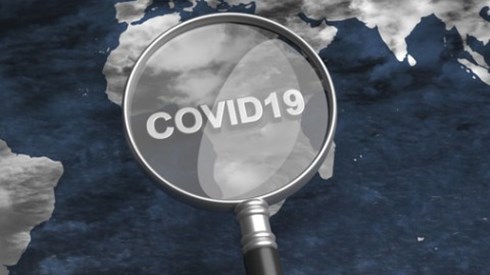Innovation Needed as Insurers, Reinsurers Adapt to Evolving Risks

February 02, 2022

The risk landscape has grown more complex and more interconnected over the past decade, forcing insurers and reinsurers to adapt and innovate in order to respond, a new report from A.M. Best suggests.
Emerging and intangible risks such as cyber, nondamage business interruption, regulation, and reputation are growing, with buyers facing coverage gaps, new risks, and changing protection needs that provide an opportunity for insurers and reinsurers, according to the rating agency.
Still, the industry faces significant challenges, most notably quantifying potential casualty accumulations, Best says in the January 26, 2022, Best's Special Report, titled "(Re)insurers Adapt Practices To Address Evolving Risk Landscape."
To succeed in this changing risk environment, insurers and reinsurers will need to innovate, the Best report suggests.
Climate change and greater concentrations of assets and lives in areas exposed to natural catastrophes are increasing disaster losses, the report says. Meanwhile, the COVID-19 pandemic highlighted the interconnectedness of many risks, while accelerating the growth of some exposures such as cyber as many businesses embraced greater digitization and remote working in response to the pandemic.
The pandemic also increased risk awareness, underscored the need for risk management, and highlighted protection gaps, Best notes, factors that could affect the demand for insurance products.
"A.M. Best believes existing coverage gaps, as well as new risks and changing protection needs, present a significant opportunity for insurers," the report says. "Addressing these protection gaps through new and innovative products and risk management solutions will be critical to the industry's success and relevance over the longer term."
But, as the world becomes more digital, the potential for significant risk accumulations grows, Best says. Consequently, insurers' understanding of the drivers of risks and their possible accumulation must evolve.
The Best report suggests that insurers' casualty insurance portfolios are particularly exposed to changing risks and increased interconnectivity.
"Casualty catastrophes are driven by human factors and are highly sensitive to the changing legal, technological, and social environment," the report says. "The events—and subsequent claims—can take many years to unfold and may occur over multiple territories, which makes reserving for them extremely difficult. Further, as they tend to be diverse in nature and therefore usually nonrepeating, it is difficult to predict future losses from past events."
Best says that its analysis of insurers does not currently include a standard casualty stress test in its capital model. The rating agency does, however, consider the potential for losses from a casualty catastrophe to have an impact on the insurer's balance sheet in its rating process, including through its discussion of the insurer's enterprise risk management.
Best says it engages with individual companies and discusses their efforts to understand and manage their potential casualty loss accumulations. The rating agency outlines several areas of focus in those discussions.
- How companies analyze and investigate emerging risks
- How they use expert knowledge to identify potential risks
- Sources of risk and how they accumulate across portfolios
- How companies measure the scope of potential threats to their capital such as through risk modeling
- The level and quality of exposure data
As risks evolve, risk management techniques and tools will evolve with them, Best suggests. While expecting companies to make use of those tools where appropriate, Best notes that it's important that insurers and reinsurers recognize the limitations of tools and models, particularly given the complexity of quantifying potential aggregations of liability exposures.
The Best report notes that the risk landscape is changing for natural catastrophes as well. While sophisticated models exist to analyze potential exposures to high-severity/low-frequency primary perils, increasingly natural disaster losses are being driven by secondary perils.
"Unlike primary perils, these secondary peril events occur much more frequently, causing losses that range from low to midsized," the report says. "The main perils in this category include wildfires, severe convective storms, and floods."
While risk assessments need to address the frequency and severity of individual perils, they also need to account for the compounding effects of climate variability, Best says.
Best notes that business interruption (BI) losses have grown significantly in recent years and can add to insurers' and reinsurers' losses from catastrophe events.
"Supply chains have become more complex and increasingly span countries and continents, meaning that local events can develop into insured losses of international significance, because of their impact on the BI and contingent BI elements of property policies," the Best report says.
The report also notes that the COVID-19 pandemic highlighted the potential for significant BI losses from nondamage systemic events. While BI endorsements in property policies typically only cover losses of earnings resulting from physical damage, some policies do cover business interruption resulting from other causes such as infectious disease, leaving some insurers exposed to unanticipated BI losses resulting from pandemic lockdowns.
In addition, as intangible assets represent an increasing percentage of businesses' assets, going forward businesses will be more vulnerable to disruptions from events that do not involve direct physical damage, Best says.
As risks grow, evolve, and become more complex, there are opportunities for the insurance industry to not only better meet insurance buyers' risk transfer needs but also to offer more than pure financial protection through better risk insights and risk management tools and services, Best says.
"In A.M. Best's view, innovation is critical to the long-term success of all insurers," the report says. "With innovation, insurers can develop sustainable competitive advantages and better respond to external challenges such as evolving consumer preferences, growing business complexity, shifting market dynamics, and expanding technological advancements, which ultimately will enable their longevity and support financial strength."
Source: Best's Special Report, "(Re)insurers Adapt Practices To Address Evolving Risk Landscape," A.M. Best Company, Inc., January 26, 2022, Copyright © 2021 A.M. Best Company, Inc. and/or its affiliates. ALL RIGHTS RESERVED.
February 02, 2022





